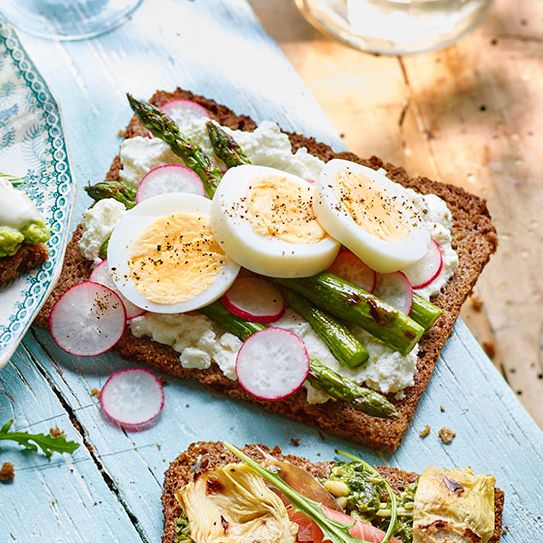Whether you like dipping toast in them, eating them on top of a salad or just by themselves, hard boiled eggs are a great source of protein. There are two ways to boil an egg: starting in boiling water or starting in cold water. Both work well as long as you follow certain rules.
The secret to perfect boiled eggs...
How to prevent your egg from cracking:
- The egg must be at room temperature so that the shell isn't too shocked when it's lowered into boiling water.
- Gently lower in the egg using a long spoon to avoid the shell from cracking on the base of the pan and so that the egg acclimatises to the heat of the water slowly.
- Cook at a simmer rather than a rolling boil to prevent too much movement of the egg.
- Cook in a small saucepan to also prevent too much room for movement in the pan.
- If you want to be extra cautious, you can gently pierce a small hole with a pin either end of the egg pre-boiling to relieve the pressure inside the shell.
Method 1
What to read next
For both methods, cover the eggs with water plus 2.5cm above the egg.
1) Bring a small pan of water to the boil. Once the water is boiling, add a medium egg. For a soft-boiled egg, cook for 6 minutes; for a medium egg, cook for 8 minutes; and for a hard-boiled egg, cook for 10 minutes.
2) Remove the egg from the water with a slotted spoon and serve.
Method 2
1) Put a medium egg in a small pan and cover with cold water. Put on a lid and bring to the boil. When the water begins to boil, remove the lid and cook for 2 minutes for a soft-boiled egg, 5 minutes for a medium egg, and 7 minutes for a hard-boiled egg.
2) Remove the egg from the water with a slotted spoon and serve.
If you are wanting to peel your egg then plunge the cooked egg into ice cold water. Remove from the water when cool enough to handle, gently tap the base of the egg on a hard surface and gently peel. Rinse the peeled egg in cold water to get rid of any excess shell. Serve!
If you'd like to make the Scandi-style open sandwich in the image above, then here's how!
A crack team of highly skilled food content producers, the GH Kitchen Team are Good Housekeeping’s resident recipe developers and all-round food obsessives. GH Kitchen Director Sarah Akhurst is our resident hosting pro and loves nothing more than putting on a foodie feast for friends. Senior Cookery Writer Alice Shields is a former pastry chef and baking fanatic who loves making bread and would have peanut butter with everything if she could. Lover of all things savoury, Senior Cookery Writer Grace Evans can be found eating nocellara olives at every opportunity, and will take the cheeseboard over dessert any time. With a wealth of professional kitchen experience between them, they’re dedicated to ensuring every Good Housekeeping recipe is the best it can be, so you can trust they’ll work every single time.













